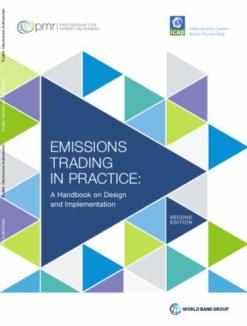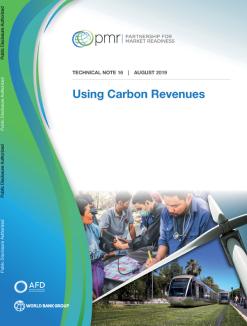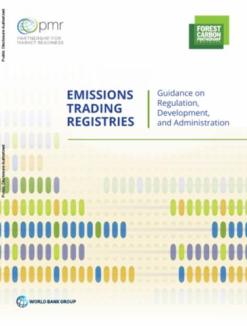Emission Trading systems
Emission Trading Systems
Emission Trading systems
In an emissions trading system (ETS), the government places a limit on the amount of GHG emissions from covered entities. Entities must surrender emission units (or “allowances”) to cover their emissions within a compliance period. Each emission unit represents the right to emit a certain volume of emissions (typically 1 tCO2e) and can be traded between covered entities or sometimes with other traders. There are several different types of ETSs, including “cap-and-trade” and “rate-based” approaches, and different terms are used for the emission units within different systems. The carbon price in these systems is usually a function of supply and demand for emission units.
To maximize effectiveness, any ETS needs to be designed in a way that is appropriate to its context. The resources outlined in this page are intended to help decision makers, policy practitioners and stakeholders achieve this goal.

Assessing Readiness by Modelling Impacts
Where sufficient data and resources are available, modeling can serve as a valuable tool to help decision makers gain insights into a range of impacts and broader economic benefits that are relevant to ETS design. The World Bank and IMF jointly developed the Climate Policy Assessment Tool (CPAT), a spreadsheet-based modeling tool, to help countries perform a quick diagnostic of the potential benefits of a carbon pricing reform across key dimensions. This includes emissions reductions and macroeconomic aggregates air pollution and health, road fatalities and congestion, distributional impacts on households and industries, and many other metrics.
Before proceeding to design ETSs, policymakers need a clear understanding of what carbon pricing is and what it can and cannot do. Additionally, stakeholder and public support are critical to achieve enduring and robust carbon pricing policy. How jurisdictions communicate their carbon pricing policy plays a key role in creating and maintaining that support.
Unlocking the potential of carbon pricing not only requires setting clear policy direction but also overcoming political economy challenges—often navigating the delicate balance between local concerns, industry interests, institutional capacities, and the prevailing political landscape. Furthermore, in order to position the system strategically within a broader policy portfolio and in the transition to net-zero, it is important to have a clear view of how the system will contribute to a jurisdiction’s climate policy objectives and its relationship with other current or planned sectoral policies.
When designing a carbon-pricing instrument, it is important to understand both its potential benefits and costs. For instance, climate goals often compete with other public priorities, so it is important to recognize that carbon prices can yield numerous benefits to society beyond climate mitigation, such as cleaner air and water, increased energy and food security, and enhanced macroeconomic stability. It is also important to understand the implications, opportunities, and challenges associated with different approaches to carbon revenue use.
Like other climate policies, an ETS needs rigorous enforcement of participants’ obligations and effective government oversight of the system. Implementing effective systems for monitoring, reporting, and verification (MRV) of greenhouse gas emissions early in the process of ETS development will greatly support compliance and the operation of markets.











